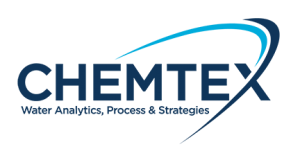
How to Overcome Today's Skilled Labor Shortage
Is your business confronting a shortage of skilled labor?
According to a 2018 study by Korn Ferry, a global organizational consulting firm, a world-wide talent shortage threatens business growth everywhere.
“The study found that left to run its course, this shortage will create 85.2 million unfilled jobs and nearly $8.5 trillion in unrealized revenue in the economies analyzed,” stated a press release. Further, “The U.S. faces a critical shortage of skilled workers that is set to worsen. It could leave $1.748 trillion of annual revenue on the table by 2030 – equivalent to 6 percent of the country’s economy.”
The shortage is exacerbated by the retirement of Baby Boomers from the work force, as well as the disruption of supply and demand occasioned by the coronavirus pandemic.
The good news is that you can and should take action to increase the skills of existing and potential workers. Such efforts help optimize your own hiring pool, as well as raising overall worker talent, which may benefit both your suppliers and customers.
Here are some strategies for countering the shortage of skilled labor in your plant and your community.
Improve Your Company Image
Rightly or wrongly, many people have negative perceptions of industrial work. They may think it’s boring, dirty or dangerous. They may think it lacks challenges or is low-tech. They might think wages are low, opportunities for advancement are limited, and the jobs are heading overseas.
You can change these false impressions. Craft a strategy to share the story of your workplace to the community. Use social media and PR to tell the story of your company and the truth of the career opportunities there. Offer virtual plant tours to students and community organizations.
Invest in Employee Retention
Retaining your existing employees deserves more attention and resources than recruiting new ones. Reduce the costs of searching, hiring and training. Competitive compensation, responsive management, a safe work place, and attractive benefits are critical to keeping employees loyal, engaged and committed.


Internal Training Programs
Upskill workers with internal training opportunities and cross training. By offering internal advancement, you’ll keep employees engaged and loyal, and the business will benefit from the in-depth knowledge of your team. Keeping employees on a trajectory of continuous advancement means you can keep bringing in lower skilled workers for entry-level jobs, and putting them on track to advance.
Partner with Schools and Colleges
Use vocational education and outreach to attract young workers. Connect with local educational institutions to develop manufacturing-related curriculum and an apprenticeship program. Many kids are not aware of the job possibilities in manufacturing and industry: You can change this.
Veteran Outreach
Emphasizing the training and advancement opportunities in your company and make HR recruiting efforts directly to this community.
Strategic Workforce Planning
SWP (Strategic Workforce Planning) means making sure your HR strategy and processes align with your company’s business objectives. This focused, long-term approach can include using technology to make the recruiting process increasing data-driven, and hyper-targeting candidate pools.
Strategically Automate Operations
Automation can be a big and expensive undertaking, but it will lower your reliance on skilled labor. Audit your processes with an eye for automation opportunities.


/NQA-ISO-9001-Logo-ANAB.jpg)